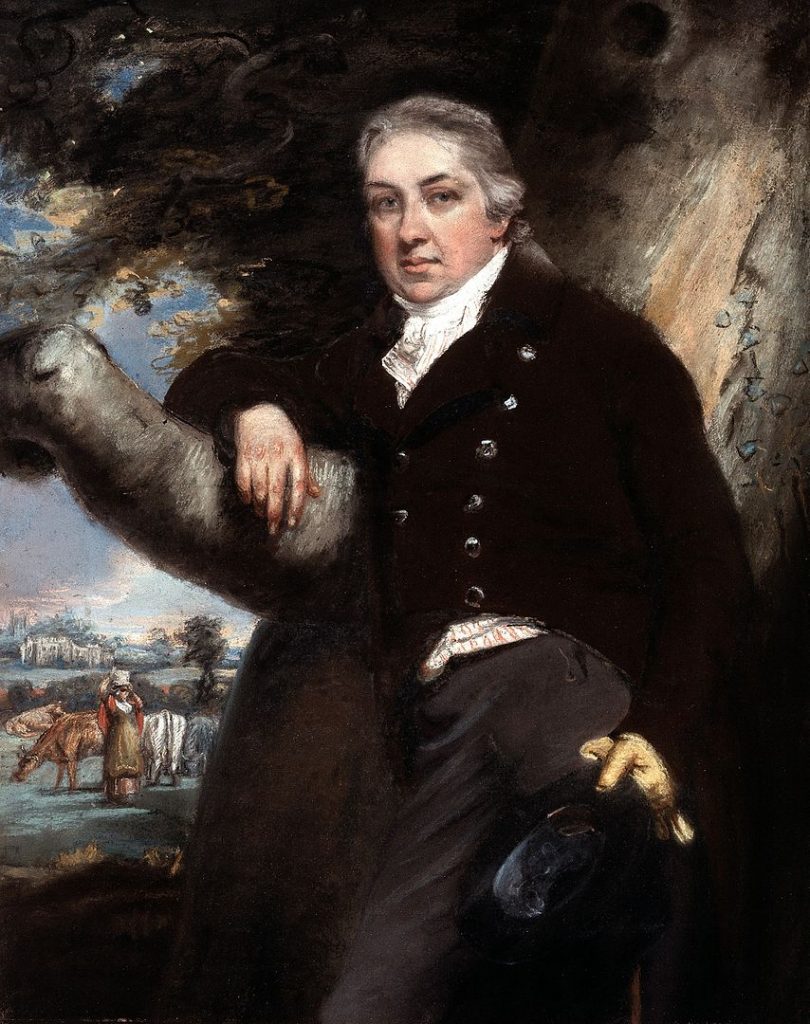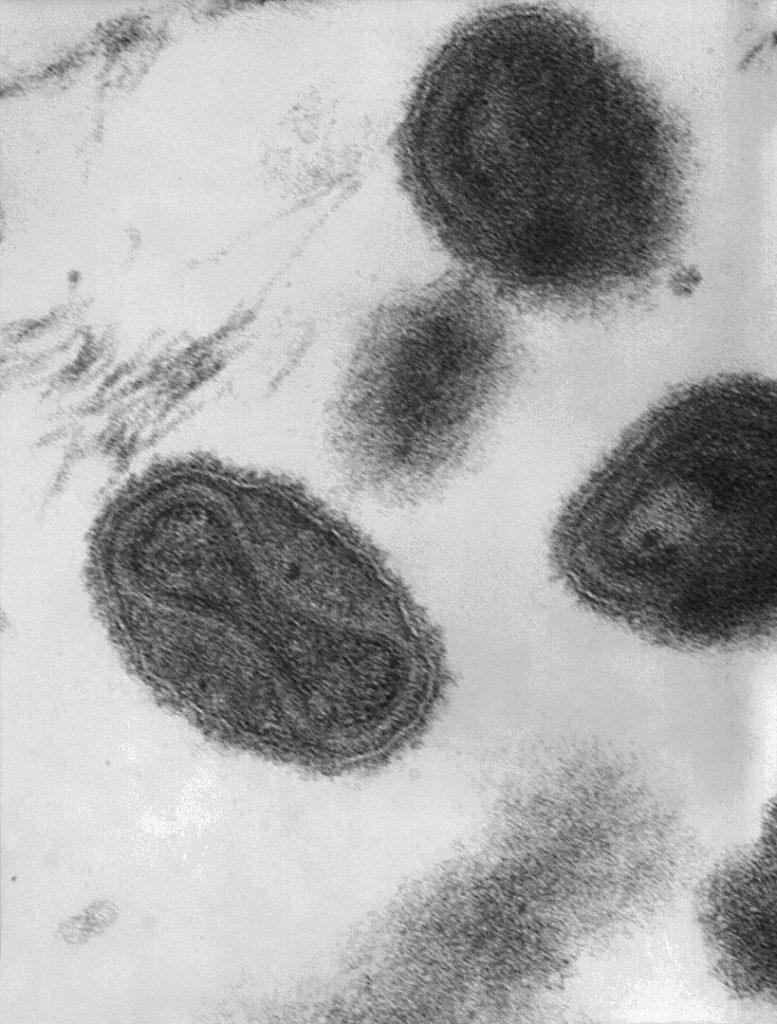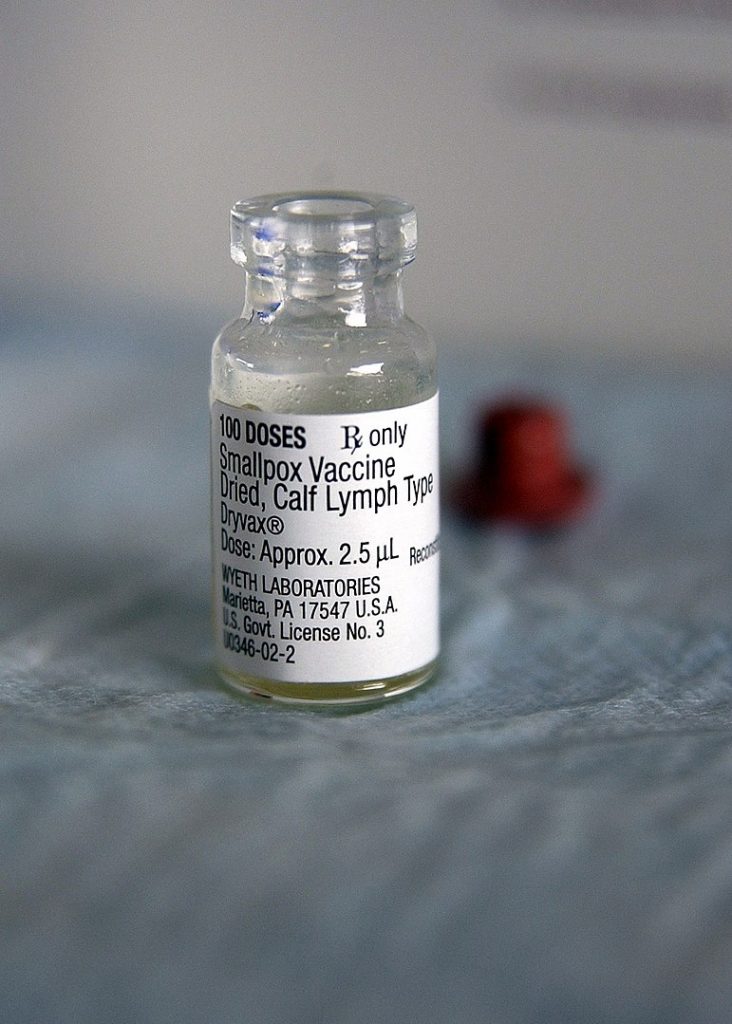TBT: Super Awesome People™ in History.
After an incredibly sad week spent reading hundreds of obituaries of Americans who died of COVID-19 (and sharing their stories), I wanted my TBT History post to be much less-of-a-bummer, but still on theme.
COVID-19 has devastated the world, with more than 13.6 million confirmed cases (as of 7/16), and nearly 600,000 confirmed deaths (24% of them Americans). But eventually, the pandemic will end, and although it’s still unclear if COVID-19 antibodies will provide enough lasting immunity for the development of an effective vaccine, some of the world’s most brilliant minds are doing everything they can to save us with science.
And the man who invented vaccines? That would be the “Father of Immunology”: Edward Jenner (1749-1823)

Edward Jenner (18th century painting by John Raphael Smith) 
Smallpox virons magnified 370,000x (CDC/Dr. Fred Murphy; Sylvia Whitfield) 
Vile of Smallpox vaccine from 2003 (U.S. Navy/Photographer’s Mate 2nd Class Felix Garza Jr.)
History of Smallpox
Smallpox was an extremely deadly infectious disease caused by two strains of the variola virus. Variola minor killed about 1% of people infected, while variola major was far more deadly and killed around 3 out of 10 infected persons—30%. The origin of Smallpox is unknown, although it may have infected the earliest human agricultural settlements around 12,000 BCE, and possibly appeared in the medical writings of ancient India as early as 1500 BCE. Over the centuries, the virus spread around the world as civilizations, trade, and travel expanded, and Smallpox was introduced to new global populations.
Smallpox was primarily transmitted through prolonged face-to-face contact between people. Infected persons were not contagious during the incubation period (which lasted 7-19 days), before the initial symptoms of fever, aches, and sometimes vomiting lasted 2-4 days. People were most contagious during the early rash stage of the infection when spots would appear on the tongue and mouth and break open into sores which spread all over the body within 24 hours. For the next 10 days, the sores became pustules and then crusted over into scabs. The scabs fell off over a period of about 6 days, and once the scabs were gone, the person was no longer contagious—if they even survived that long.
The predecessor to the Smallpox vaccine was variolation (inoculation), which was first developed in Asia and by 1700, it had spread to Africa, India, and the Ottoman Empire. Variolation involved deliberately infecting a person with smallpox (traditionally, by blowing dried Smallpox scabs into their nose) in order to confer immunity. It was a risky process—1-2% of inoculated people died—but it was far less deadly than naturally contracting variola major, and those who survived were then immune to Smallpox. Europeans and Americas began inoculations in the early 18th century (with a puncture instead of nose flakes), and it was a highly controversial practice during the 1721 Boston Smallpox epidemic.
Development of the Smallpox Vaccine
In the 18th century, Smallpox regularly killed around 10% of the population, and as much as 20% in denser cities and towns where the virus was easier to contract. By the 1770s, several doctors had realized that prior infection by cowpox, an infectious disease more common in animals (and similar to, but much milder than Smallpox), could confer Smallpox immunity. But the belief that milkmaids could “never have an ugly pockmarked face” because of their immunity to smallpox was largely considered country lore and had not been widely proven.
On May 14, 1796, Dr. Edward Jenner (physician, scientist) administered what would become known as the world’s first vaccine. Jenner took fluid from a cowpox blister on the hand of milkmaid Sarah Nelmes and used it to inoculate eight-year-old James Phipps, in order to test whether cowpox could protect against Smallpox. Phipps became mildly ill with cowpox and quickly recovered. On July 1, Jenner variolated Phipps with a traditional Smallpox inoculation and Phipps did not become sick, suggesting that the cowpox inoculation had worked and the boy was now immune to Smallpox.
Jenner repeatedly tested Phipps’ immunity and conducted many additional experiments and was able to prove that not only did cowpox confer immunity to Smallpox, but the immunity could be transmitted from person to person, without the need for infected animals. His initial experimental observations were rejected by the Royal Society of London in 1797, but after additional research, In 1798, he published An Inquiry into the Causes and Effects of the Variolae Vaccinae; a Disease Discovered in some of the Western Counties of England, Particularly Gloucestershire, and Known by the Name of The Cow Pox. Jenner coined the term “vaccination” from the Latin word vacca, meaning “cow”, since the immunization was derived from cowpox.
Vaccination Spreads; Smallpox Eradicated
For years following his discovery, Edward Jenner continued to promote vaccinations and prove their efficacy on dozens of additional subjects, including his own 11-month-old son, Robert. Jenner called himself the “Vaccine Clerk to the World” and developed techniques to make the vaccine easily transportable for wider use. When he had trouble finding willing volunteers, Jenner convinced other doctors to vaccinate their own patients, and by 1800, vaccinations had spread from England to most other European countries.
Edward Jenner did not use his discoveries to enrich himself, and he even converted a garden summerhouse into the world’s first vaccination clinic, which he called the “Temple of Vaccinia“, where he vaccinated poor people at no cost. In 1840, the United Kingdom’s Vaccination Act made variolation illegal and provided vaccinations free of charge, and in 1852, vaccination was first made compulsory.
In 1967, the World Health Organization launched a campaign to eradicate Smallpox worldwide, and in 1980, Smallpox was officially declared eradicated. The only other infectious disease to reach the eradication milestone is rinderpest. There are four ongoing eradication programs for poliomyelitis, yaws, dracunculiasis, and malaria.
“No human being who has ever lived has saved more lives in history than the simple country doctor from Gloucestershire.”
Journalist Andrew Marr, 2012, about Edward Jenner
Learn More About Edward Jenner, the History of Smallpox, and the Development of Vaccines
- Edward Jenner and the History of Smallpox and Vaccination (National Center for Biotechnology Information)
- About Edward Jenner (The Jenner Institute)
- History – Dr. Jenner’s House Museum and Garden (jennermuseum.com)
- Smallpox (Centers for Disease Control and Prevention)
- The Rise and Fall of Smallpox (History.com)
- Variolation (Science Direct)
- The Fight Over Inoculation During the 1721 Boston Smallpox Epidemic (SITN Harvard University)
- Variolation vs. Vaccination: 18th Century Developments in Smallpox Inoculation (The Beehive)
- The Origins of Vaccination: Myths and Reality (Journal of the Royal Society of Medicine)
- What’s The Real Story About The Milkmaid And The Smallpox Vaccine? (NPR)
- Episode 3 Gnarlypox (This Podcast Will Kill You – highly recommended podcast!)